
In the intricate and dynamic world of manufacturing and machining, achieving precision isn’t just a goal – it’s a requisite. Ensuring this precision across diverse products and components often demands the adoption of universally recognized standards. ISO 2768, with its meticulous guidelines, represents one of these crucial intrantaional standards. This standard doesn’t only underscore the importance of accuracy but also advocates for the consistent quality that’s vital in today’s competitive landscape.
As we journey through this guide, we’ll delve into what ISO 2768 truly encapsulates and why it sits at the heart of modern manufacturing particularly in CNC machining and precision CNC machining.
The Basics: Unpacking ISO 2768
The term ISO 2768 might appear to be just another technical jargon, but for those in manufacturing it is an important quality indiactor of machined parts. Here’s a comprehensive look into this pivotal standard:
ISO 2768 refers to the International Standard for general tolerances. These are utilized for linear dimensions and angular dimensions that don’t have individual tolerance indications in technical drawings. The primary objective of this standard is to simplify drawing indications and thus, expedite the design and manufacturing process.
- Historical Context
The inception of ISO 2768 was driven by the need to establish uniformity in the domain of technical drawings. With diverse companies, and indeed countries, utilizing their distinct systems of tolerancing, there was a pressing need for a singular, universally adoptable standard. ISO 2768 emerged as a response to this, offering a streamlined set of guidelines that could be globally recognized and implemented.
- Classification within ISO 2768:
ISO 2768 is not a monolithic entity but is further divided into specific classifications to cater to varied requirements. Two primary tolerance categories include:
- ISO 2768-m: Pertaining to products that necessitate medium tolerance fineness. This class designation is the most commonly adopted for a vast array of machined parts such as auutomobile components and household appliances.
- ISO 2768-f: Employed for products demanding fine medium detailing and precision. Often found in intricate machinery components or precision instruments, such as those used in aerospace or medical devices.
Table: Overview of ISO 2768 Classifications
| Classification | Application | Typical Products |
|---|---|---|
| ISO 2768-m | Medium-level fineness | Automobile components, household appliances, etc. |
| ISO 2768-f | High precision and detailing | Precision tools, aerospace components, etc. |
Tolerance Range Determination & Implications for Manufacturing
One of the primary uses of ISO 2768 is its provision of general tolerances for linear and angular dimensions. The actual tolerance ranges are determined based on the nominal size and class designation of the component. This ensures that larger components are provided with a greater degree of tolerance flexibility, while smaller and more intricate parts, measured in mm, have tighter controls which are often refered to as mm fine tolerances.
The use of ISO 2768 simplifies the drawing specifications and design process for engineers and designers. Instead of specifying individual tolerances for each dimension on a drawing, the general tolerances provided by ISO 2768 can be referenced. This not only reduces the clutter on technical drawings but also ensures that manufacturers have clear, unambiguous guidelines to follow. The reduced ambiguity leads to fewer production errors, ensuring consistent quality in machined parts and reducing wastage. This is an important factor in quality management systems.
The Pivotal Role of Standard Tolerancing in Manufacturing
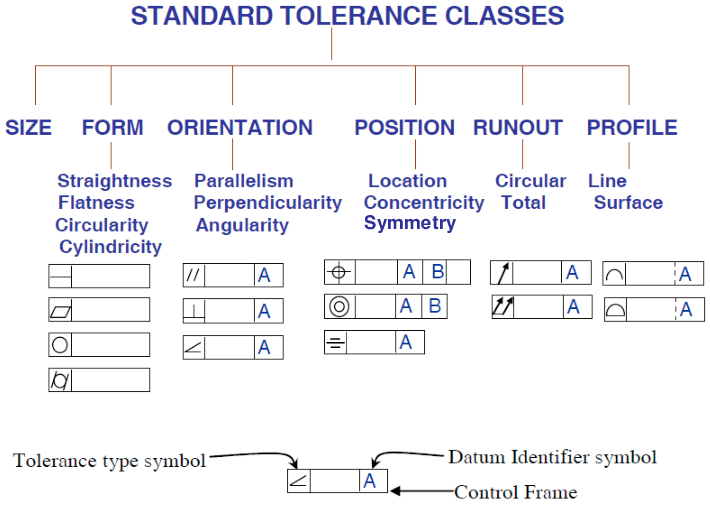
Standard tolerancing
The labyrinthine complexities of the manufacturing world often demand streamlined processes and rigorous standards to ensure products are created consistently and with high precision. Enter standard tolerancing. A system that might seem laden with complex terminologies and numerical specifics, but its core idea revolves around ensuring reliability and repeatability in the production world.
What is Standard Tolerancing & Why It is Essential?
Tolerancing pertains to specifying permissible limits of variation in a physical dimension, such as length mm, breadth, or diameter of an object. It defines the boundaries of acceptability for dimensions such as the length, breadth, or diameter of an object. Standard tolerancing is the utilization of universally recognized tolerance standards rather than having arbitrary or individually determined ones.
The followings are the key reasons standard tolerancing is essential.
- Consistency Across Batches: When manufacturing thousands or even millions of units, maintaining uniformity can be challenging. Tolerances ensure that even with minute variations, the final product remains within acceptable limits.
- Interchangeability of Parts: In industries like automotive or electronics, parts are often produced by different suppliers. Standard tolerances ensure these machined parts, despite being produced in different environments, can fit seamlessly into the final product.
- Reduced Waste: With a well-defined boundary of acceptability, fewer products are discarded due to not meeting specifications. This means less wastage of materials and resources which aligns manufacturing with quality control principles.
- Enhanced Reputation: Companies known for maintaining tight tolerances and consistent quality in their products naturally garner more trust and loyalty from their customers.
ISO Tolerances: The Global Gold Standard
While there are multiple systems of tolerancing globally, ISO tolerances stand out. They provide a universally recognized system, thus erasing the confusion that might arise from using multiple systems. When a product adheres to ISO tolerances, it communicates a certain degree of reliability and quality assurance to partners globally, often referred to as ISO international standard.
ISO Machining: Precision at its Best
Machining has remained an integral part of manufacturing, shaping raw materials into the desired machined parts and components. However, with the globalization of industries and the pressing need for uniformity, ISO machining emerges as the shining beacon ensuring precision and interoperability on an international scale.
ISO machining isn’t a distinct method of machining, but rather, it refers to machining processes that comply with International Standards Organization (ISO) guidelines. These guidelines ensure that parts and components manufactured in one part of the world are consistent with those produced elsewhere, granting uniformity and consistent quality.
- Benefits of ISO Machining:
- Standardization: This ensures that the produced parts are consistent, irrespective of where they’re manufactured.
- Interoperability: Parts made following ISO standards can easily be used in conjunction with parts produced in different facilities or countries.
- Quality Assurance: ISO standards inherently ensure a high-quality outcome, reinforcing trust among consumers and partners.
- Enhanced Efficiency: With clear standards to follow, manufacturers can optimize their processes, minimizing waste and enhancing productivity in their CNC machining tolerance.
As technology evolves, the world of machining isn’t left behind. With advancements like Computer Numerical Control (CNC) machines and additive manufacturing, ISO continually updates its guidelines to incorporate these new technologies. Thus, ISO machining ensures that as the industry progresses, the standards remain relevant, pushing for excellence and precision.
Table: Aspects of ISO Machining
| Aspect | Description |
|---|---|
| Material Classification | ISO standards often classify materials, allowing for better machining instructions. |
| Tolerance Standards | Guidelines for acceptable variances in dimensions to maintain product integrity. |
| Tool Classification | Standardized tools ensure uniformity in machining processes across the globe. |
| Quality Control | Procedures to inspect and ensure that the finished product aligns with ISO standards. |
Deciphering the ISO Tolerance Table
One of the cornerstones of ISO’s commitment to precision in manufacturing is its detailed tolerance table. This systematic representation provides manufacturers with a clear understanding of acceptable variances for different machining processes, ensuring products retain their integrity and functionality.
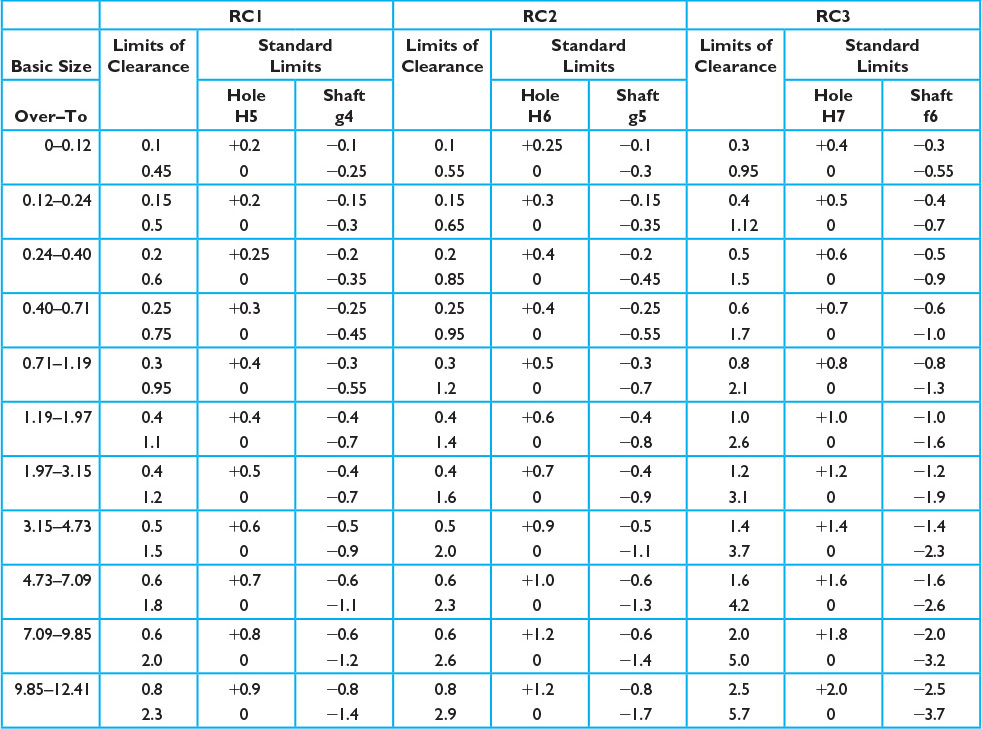
ISO tolerance table for hole and shafts
Essentially, the ISO tolerance table classifies the permissible limits of size variations known as dimensional tolerances. For any dimension of a manufactured part, there’s a specified range (upper and lower limit) within which the dimension must lie. These ranges are determined based on the function and fit of the part in its final application including geometrical tolerances for features like external radii or circular run.
Key Components & Interpretation of ISO Tolerance Table
- Basic Size: This is the theoretical or nominal size from which all tolerances are derived.
- Tolerance Grade: Denoted usually by an alphabetic symbol, it indicates the precision level of the manufacturing process. For instance, “f” might denote a fine medium tolerance while “m” could signify medium coarse.
- Tolerance Class: Indicates the kind of fit required, be it a sliding fit, interference fit, or others, often referred to as tolerance class designation.
Interpreting the Table
The ISO tolerance table is often laid out with the basic size on the vertical axis and the tolerance grade on the horizontal. The intersection provides the permissible variances for that size and grade. By referring to this tolerance chart, a manufacturer can easily deduce the boundaries within which a particular part’s dimensions must fall.
Table: Simplified View of an ISO Tolerance Table
| Basic Size | Grade f | Grade m |
|---|---|---|
| 10mm | ±0.05mm | ±0.1mm |
| 20mm | ±0.06mm | ±0.12mm |
| 30mm | ±0.07mm | ±0.14mm |
(Note: This table is a simplistic representation. Actual ISO tolerance tables are far more detailed.)
Standard Tolerancing: A Uniform Approach
The concept of tolerancing is not just about specifications and measurements; it’s an assurance of quality, functionality, and reliability. Standard tolerancing, in this context, provides a coherent and standardized methodology that defines acceptable manufacturing variations across the globe.
In manufacturing, the term “tolerance” refers to the permissible limits within which a physical dimension can vary. For example, if a component is designed to be 100mm in length, a tolerance might allow a deviation of ±0.5mm, meaning the component’s actual length could vary between 99.5mm and 100.5mm.
The essence of Standard Tolerancing
- Global Coherence: Standard tolerancing ensures uniformity in product specifications, no matter where they are manufactured.
- Interchangeability: A universally accepted tolerance standard ensures machined parts produced in one country can seamlessly fit and function in assemblies in another country.
- Reduction in Rework:With a clear benchmark in place, manufacturers can significantly reduce instances of reworks, saving both time and costs, aligning with quality management systems.
Adoption and Implementation Challenges
Despite the advantages, standard tolerancing poses its challenges, mainly due to diverse manufacturing cultures and legacy systems prevalent in different countries. However, the adoption of global standards, like the ISO series, is steadily bridging these gaps.
ISO-2768: Bridging the Global Manufacturing Gap
ISO-2768, often cited in manufacturing blueprints and technical drawings, stands as a testament to the relentless pursuit of precision and consistency in the production realm.
ISO-2768 addresses general tolerances for linear and angular dimensions that lack individual tolerance indications. These general tolerances are further categorized based on the type of production and intricacy of the component, such as ISO 2768-m for medium tolerance and ISO 2768-f for fine medium tolerances.
Breaking Down ISO-2768:
- ISO-2768-m: Medium tolerances, typically used for components where stringent precision isn’t critical.
- ISO-2768-f: Fine tolerances, reserved for components demanding high precision such as those in medical devices or aerospace.
It is a globally recognized standard for general tolerances in mechanical engineering drawings. It ensures consistent quality and fit of parts manufactured across different geographies. The standard reduces ambiguity by specifying a general tolerance, providing clarity to manufacturers. With clearer guidelines, ISO 2768 leads to significant cost savings for manufacturers by reducing wastage.
Understanding ISO 2768 Variants and Designations
ISO 2768 is often referenced with specific designations, such as ISO 2768-mk, ISO 2768-1, ISO 2768-1 c, ISO 2768-1 f, or DIN ISO 2768, which are part of its broader framework. These designations provide additional granularity to the standard, catering to specific tolerance classes and applications. For instance:
-
ISO 2768-mk: Refers to medium coarse tolerances, often used in less critical applications where general tolerances suffice.
-
ISO 2768-1: Part of the ISO 2768 series, it focuses specifically on general tolerances for linear and angular dimensions.
-
DIN ISO 2768: Combines ISO 2768 with DIN (German Institute for Standardization) guidelines, ensuring compatibility in regions adhering to DIN standards, such as DIN ISO 2768-1m or DIN ISO 2768-mh.
-
ISO 2768-m tolerance chart: A detailed representation of tolerance ranges for medium tolerance applications, aiding manufacturers in maintaining dimensional tolerances.
-
ISO 2768 angular tolerance: Specifies acceptable variations in angular dimensions, ensuring precision in components with angular features.
-
2768 ck or 2768 cl: These are specific class designations within the ISO 2768 framework, often used in specialized applications requiring unique tolerance classes.
These variants ensure that ISO 2768 remains flexible and adaptable to diverse manufacturing needs, from CNC machining tolerance to geometrical tolerances, ensuring consistent quality across all applications.
What Are the Advantages of ISO 2768?
ISO 2768 offers several advantages, including uniformity in defining tolerances, reduced ambiguity, and cost savings. The standard ensures that machined parts produced across different geographies are consistent in quality and fit. Manufacturers benefit from clearer guidelines, which reduce wastage, leading to significant cost savings.
- Uniformity: The standard brings a uniform approach to defining tolerances, ensuring machined parts made across different geographies are consistent in quality and fit.
- Reduced Ambiguity: By specifying a general tolerance, ISO-2768 removes ambiguities and provides clarity to manufacturers.
- Cost Savings: With clearer guidelines, there’s a reduction in wastage, leading to significant cost savings for manufacturers.
- Global Acceptance: The adoption of ISO-2768 has seen an upward trajectory, especially in industries where components are sourced from different parts of the world.
ISO Tolerance vs. Custom Tolerancing
Distinguishing between ISO tolerance and custom tolerancing is essential for understanding their applications, strengths, and limitations. Both methodologies are instrumental in their domains, offering unique advantages.
ISO tolerance standards, such as ISO 2768, establish a framework of universally accepted tolerances. By adhering to these predefined limits, manufacturers can ensure product consistency across international borders.
Custom tolerancing is tailored to a specific application or manufacturing process. While ISO tolerances are broad and universally applicable, custom tolerances are crafted for specific requirements, often for unique or proprietary products.
Table: ISO Tolerance vs. Custom Tolerancing
| Aspect | ISO Tolerance | Custom Tolerancing |
|---|---|---|
| Scope | Broad, universally applicable | Specific to product/process |
| Flexibility | Fixed as per ISO guidelines | Adjustable as per requirements |
| Application | Common manufacturing practices | Unique/proprietary products |
| Consistency | Uniformity across the globe | Varies with requirements |
When to Use Which?
- ISO Tolerance: Ideal for products manufactured in bulk and distributed internationally. Helps maintain uniformity and reduces discrepancies in multi-location manufacturing setups.
- Custom Tolerancing: Preferred for niche products or specific client requirements where general tolerances may not suffice.
Applications: Industries Using ISO 2768
The adoption of ISO 2768 is vast and varied, with numerous industries appreciating its universality and precision.
- Aerospace: In aerospace, where safety is paramount, ISO 2768 helps ensure components have consistent quality, irrespective of the manufacturing location.
- Automotive: With parts often sourced from different regions, ISO 2768 ensures that there is consistency in manufacturing, aiding seamless assembly processes.
- Medical Devices: Precision is crucial for medical devices, and the standard provides a reliable framework for manufacturers to maintain consistency.
- Electronics: Ensuring components fit perfectly is vital for electronics, and ISO 2768 assists manufacturers in achieving this precision.
- Machinery & Heavy Equipment: The standard ensures that large machinery parts, even if produced in different parts of the world, are compatible and interchangeable.
- Consumer Goods: Everyday products that require consistent quality and fit benefit immensely from ISO 2768.
Prolean’s On-demand Manufacturing Services
Prolean stands at the intersection of advanced manufacturing techniques and impeccable quality standards. Its on-demand services are a testament to this commitment. We offer on-demand manufacturing services that integrate with international standards like ISO 2768, ensuring that products meet stringent quality standards.
We provide tailored solutions, including both ISO tolerances for broad applications and custom tolerancing for specific tolerance requirements. Our company leverages the latest in manufacturing technology to ensure precision, speed, and efficiency in every project. In our decade-long business, we have served multiple sectors, from aerospace to consumer goods, underlining its versatility and commitment to excellence.
We pride ourselves on offering customized solutions, including ISO tolerances and custom tolerancing, that meet each client’s unique needs. We use ISO 2768 as a foundational guideline and incorporate it into every project, ensuring consistent quality and precision.
Conclusion: Decoding the World of Precision with ISO 2768
The intricate dance of manufacturing is as much about raw materials and machinery as it is about precision and consistency. ISO 2768, with its robust framework of tolerance standards, serves as the backbone for various industries aiming to achieve consistent, high-quality production on a global scale. From the aerospace sector, where the margin for error is minuscule, to everyday consumer goods that we interact with, the influence of this ISO standard is omnipresent.
However, while standards like ISO 2768 set the stage for global uniformity, it’s the manufacturing entities and their meticulous processes that truly bring it to life. As we’ve explored, the importance of balancing global standards with tailored solutions cannot be understated. The capability to interweave ISO guidelines with custom tolerancing, based on specific requirements, exemplifies the versatility required in today’s dynamic manufacturing landscape.
FAQs
What is ISO 2768?
ISO 2768 is a globally recognized standard for general tolerances used in linear and angular dimensions without individual tolerance indications in mechanical engineering drawings.
How does ISO machining differ from regular machining?
ISO machining adheres strictly to the standards set by the International Organization for Standardization, ensuring consistent quality and precision.
Why are ISO tolerances important in manufacturing?
They ensure that products meet specific criteria for dimensions, leading to consistent quality, fit, and function.
Is there a difference between ISO-2768 and ISO 2768?
No, both terms refer to the same standard. The hyphenated version is often used colloquially or in specific contexts.
Can I request custom tolerancing outside of the ISO standards?
Yes, some manufacturers, including Prolean, offer customized solutions tailored to specific project needs, while still emphasizing quality and precision.
What is the meaning of ISO 2768-mk?
ISO 2768-mk refers to the medium coarse tolerance class within the ISO 2768 framework, used for applications where less stringent precision is required.
How does Prolean incorporate ISO 2768 in its on-demand manufacturing services?
Prolean uses ISO 2768 as a foundational guideline, ensuring each product meets stringent standards while also offering flexibility and customization where needed.

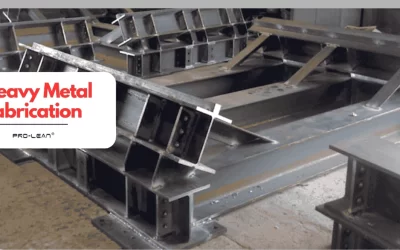
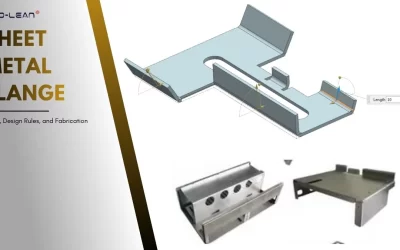
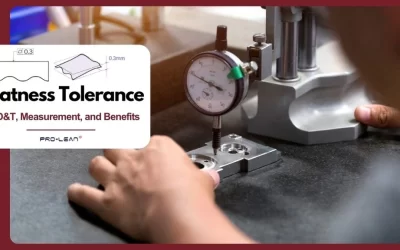
Worth reading ! Can you tell, in short, how ISO 2768 standards help maintain consistency and quality in global production processes?
ISO 2768 standardizes tolerances for linear and angular dimensions, ensuring consistent quality across manufacturing. It’s crucial for industries like aerospace, automotive, and medical devices where precision and uniformity are essential. This standard simplifies design and production, reduces errors, and ensures part interchangeability globally.
Great content! Which quality control procedure of standard do you follow in CNC machining?
We use First article inspections procedures! Plus we have CMM machines and other digital measuring equipment’s and we give Globally recognized 9001 certificates along with your marching orders.
I have a question when your measuring reading a drawing that is using standard measurements do you switch and and use metric measurements?
Hello, Dina.
When reading a technical drawing that uses standard (imperial) measurements, We generally stick with the units provided in the drawing. However, we can also change the calibration and perform the metric measurements. Additionally, conversion option is always there.
Nice article! Does machining with custom tolerances is expensive than using ISO or any other standard tolerances?
Thank you! Yes, machining with custom tolerances can be more expensive than using standard ISO or other commonly recognized tolerances.
Custom tolerances often require specialized tooling, additional setup time, and more frequent quality checks to ensure precision. This results in longer machining times and higher labor costs.
Additionally, custom tolerances may increase scrap rates if parts don’t meet the exact specifications, further impacting costs.
On the other hand, standard tolerances are generally more cost-effective as they align with existing processes and tooling, allowing for more efficient production.
Yes, machining with custom tolerances is typically more expensive than using standard ISO tolerances. Custom tolerances often require additional setup, precise adjustments, and quality checks, increasing both machining time and production costs. Standard tolerances streamline processes, making them more cost-effective.